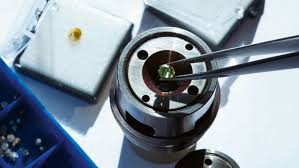
Breaking News
 HERE'S WHAT NO CASH ACTUALLY MEANS (Dave Ramsey re-post)
HERE'S WHAT NO CASH ACTUALLY MEANS (Dave Ramsey re-post)
 The Silver Shift: Why Stackers Are DUMPING 90% Silver & Buying SilverBitz!
The Silver Shift: Why Stackers Are DUMPING 90% Silver & Buying SilverBitz!
 Eye-bouncing - #SolutionsWatch
Eye-bouncing - #SolutionsWatch
 'Targeted, Antisemitism': 16 Dead, 38 Injured After Father & Son Terrorists Attack...
'Targeted, Antisemitism': 16 Dead, 38 Injured After Father & Son Terrorists Attack...
Top Tech News
 This tiny dev board is packed with features for ambitious makers
This tiny dev board is packed with features for ambitious makers
 Scientists Discover Gel to Regrow Tooth Enamel
Scientists Discover Gel to Regrow Tooth Enamel
 Vitamin C and Dandelion Root Killing Cancer Cells -- as Former CDC Director Calls for COVID-19...
Vitamin C and Dandelion Root Killing Cancer Cells -- as Former CDC Director Calls for COVID-19...
 Galactic Brain: US firm plans space-based data centers, power grid to challenge China
Galactic Brain: US firm plans space-based data centers, power grid to challenge China
 A microbial cleanup for glyphosate just earned a patent. Here's why that matters
A microbial cleanup for glyphosate just earned a patent. Here's why that matters
 Japan Breaks Internet Speed Record with 5 Million Times Faster Data Transfer
Japan Breaks Internet Speed Record with 5 Million Times Faster Data Transfer
 Advanced Propulsion Resources Part 1 of 2
Advanced Propulsion Resources Part 1 of 2
 PulsarFusion a forward-thinking UK aerospace company, is pushing the boundaries of space travel...
PulsarFusion a forward-thinking UK aerospace company, is pushing the boundaries of space travel...
 Dinky little laser box throws big-screen entertainment from inches away
Dinky little laser box throws big-screen entertainment from inches away
 'World's first' sodium-ion flashlight shines bright even at -40 ºF
'World's first' sodium-ion flashlight shines bright even at -40 ºF
New superconductivity record edges closer to room temperature

Since they can conduct electricity with absolutely no loss, they could be revolutionary if not for one little problem: they only work if kept extremely cold. But now researchers at Max Planck have reported a new record high temperature for superconductivity, at a toasty -23° C (-9.4° F).
Normally, when electrons are flowing through a conductor their negative charge means they repel each other, sending them bouncing off nearby atoms. That in turn wastes a decent chunk of their energy, and we can feel this unwanted side effect as the heat given off by electronic devices.
But that doesn't alway have to be the case. Superconductors keep electrons flowing with no resistance at all, which can go a long way towards improving electrical circuits and storage – for example, a loop of superconducting wire can keep an electrical current flowing indefinitely, with no need for a power source.
Unfortunately, for now superconductors need to be chilled to extremely low temperatures to work – usually below -234º C (-389º F), which all but rules them out for most practical uses. Ideally they would work at room temperature, but the best attempts so far have only gotten them to -70° C (-94° F).



